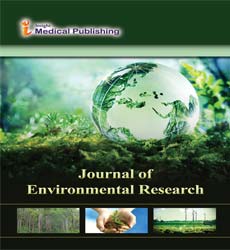Molecular characterization of extended spectrum beta-lactamase producing Escherichia coli O157:H7 from three selected rivers in Osun State, Nigeria
Joint Event on 4th International Conference on Pollution Control & Sustainable Environment & 6th Edition of International Conference on Water Pollution & Sewage Management
July 26-27, 2018 Rome, Italy
M A Bisi Johnson, Adedeji A A and Sulaiman A A
Obafemi Awolowo University, Nigeria Institute of Human Virology, Nigeria
Posters & Accepted Abstracts: J Environ Res
Abstract
Escherichia coli O157:H7 is a known pathogenic microorganism associated with contaminated water and food. The pathogen is implicated in diseases with severe morbidity and increasing death rate and resistant of the bacteria to antibiotics such as cephalosporins have complicated health interventions. Water samples from three selected rivers were investigated as a potential reservoir for extended spectrum beta lactamase (ESBL) - producing E. coli O157:H7 using phenotypic (culture-based) and molecular methods. Antibiotic susceptibility was determined using Kirk Bauer double disc method. Double disc synergy test was determined between a disc of amoxicillin-clavulanate (20μg/10μg) (Augmentin) and a 30-μg disc of each third generation cephalosporin antibiotic. ESBL positive isolates were then subjected to specific Polymerase Chain Reaction (PCR). A total of 65 isolates were confirmed as E. coli O157: H7. Among these, 98% were resistant to cefixime, ofloxacin (93%), cefuroxime (87%), augmentin (86%), cefotaxime (80%) and ciprofloxacin (43%). Of the 64 isolates resistant to third generation cephalosporins, 58 were ESBL positive phenotypically while, but at least 2 genes coexisted in 6 of the isolates. Of the 52 isolates with confirmed ESBL genes, ESBL type blaSHV was found to be dominant (40%), blaTEM 36% and blaCTX 3%. The rivers sampled were identified to harbour resistant E. coli O157:H7 and therefore, strategies should be employed to reduce the dissemination of ESBL producing bacteria in the aquatic sources which may threaten human life, animal and surrounding environment.
Google Scholar citation report
Citations : 65
Journal of Environmental Research received 65 citations as per Google Scholar report
Abstracted/Indexed in
- Google Scholar
- International Committee of Medical Journal Editors (ICMJE)
Open Access Journals
- Aquaculture & Veterinary Science
- Chemistry & Chemical Sciences
- Clinical Sciences
- Engineering
- General Science
- Genetics & Molecular Biology
- Health Care & Nursing
- Immunology & Microbiology
- Materials Science
- Mathematics & Physics
- Medical Sciences
- Neurology & Psychiatry
- Oncology & Cancer Science
- Pharmaceutical Sciences

